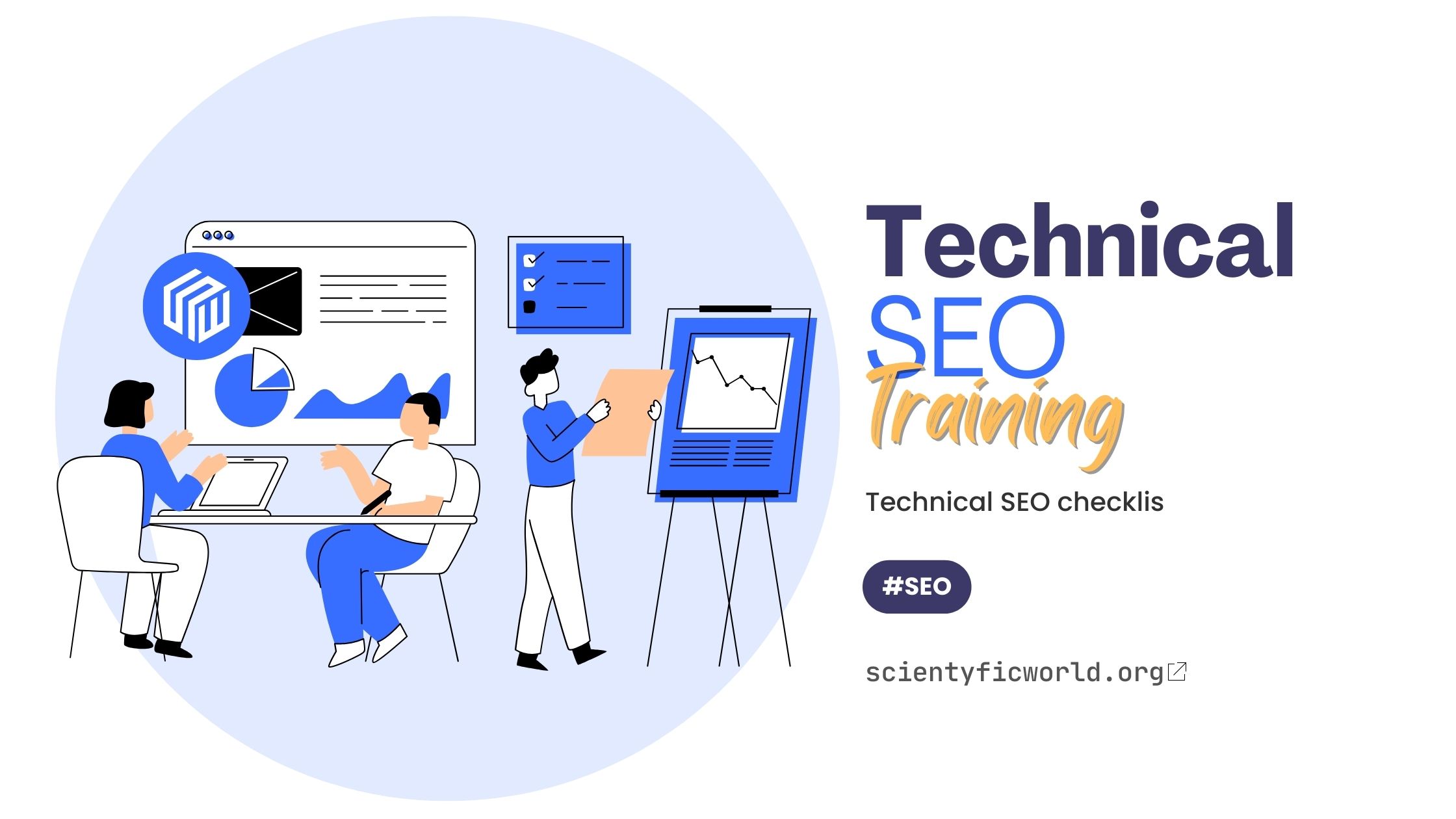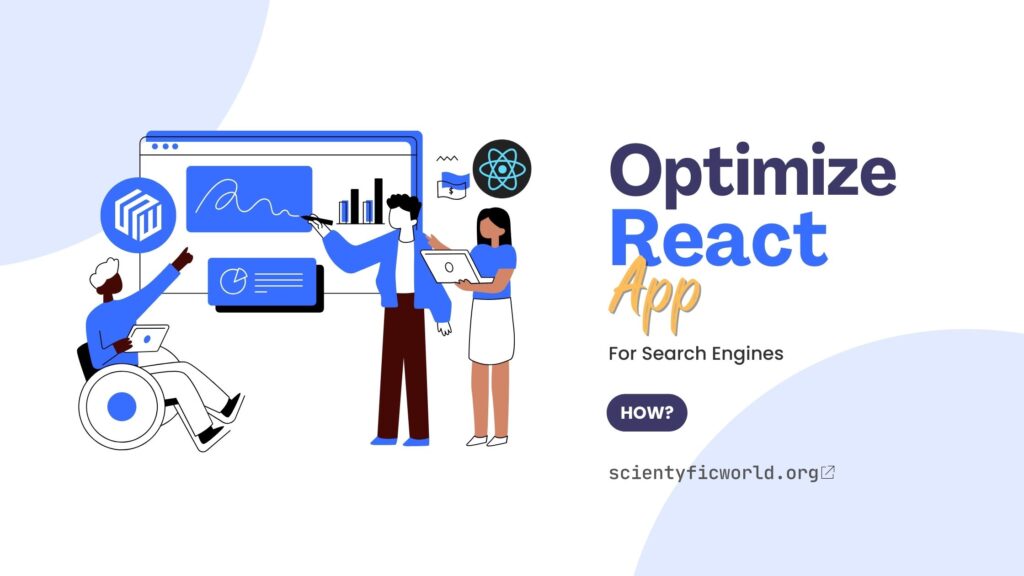Follow Us:
Technical SEO Checklist – How to Optimize Your Website for Search

Are you looking for an effective way to improve your website’s ranking in search results? If so, technical SEO should be part of your SEO strategy. Technical SEO checks and techniques help ensure that search engine algorithms can crawl and index your website accurately, as well as understand the content within it. It’s an important step that helps you obtain high-ranking positions for your keywords and important topics.
In this guide, we’ll discuss the basics of technical SEO and provide you with a comprehensive technical SEO checklist. We’ll cover several key areas that you need to focus on to help you get started improving your website’s visibility in search results.
What is Technical SEO?
At a high level, Technical SEO consists of two major components: the technical infrastructure of a website, and the content contained on the website. The technical infrastructure of a website includes the coding (HTML, CSS, JavaScript, etc.), website architecture, redirects, and server configuration. The content contained on a website includes text, images, audio, video, and other media.
Technical SEO helps search engine crawlers understand the structure of a website, which in turn helps them to index and rank a website’s content. For example, through the use of HTML tags, a website’s content can be more accurately represented and understood by search engine crawlers. Additionally, website architecture can be used to help search engine crawlers more accurately crawl, index, and rank a website’s content. This includes the use of 301 redirects, which can be used to ensure that search engine crawlers always find the most up-to-date version of a page.
Server configuration is also an important part of Technical SEO. Websites hosted on slow servers can be penalized by search engines, and Technical SEO can help ensure that a website is hosted on an optimal server. Additionally, Technical SEO can help ensure that a website is properly indexed by search engines. For example, if a website’s pages are blocked from being indexed, Technical SEO can help ensure that they are properly indexed.
In addition to the technical infrastructure of a website, Technical SEO can also be used to optimize the content of a website. This includes the use of keywords, which can be used to help search engine crawlers accurately index and ranks a website’s content. Additionally, Technical SEO can help ensure that a website’s content is properly formatted and structured so that it is more easily understood by search engine crawlers.
Technical SEO is an important and often overlooked component of SEO. It helps ensure that a website is properly indexed and ranked by search engine crawlers and that its content is properly formatted and structured. As such, it is a critical part of any successful SEO strategy.
Technical SEO vs. On-Page SEO vs. Off-Page SEO
SEO refers to the process of optimizing a website for search engines with the aim of improving its visibility and ranking. There are three types of SEO.
- On-Page SEO refers to the process of optimizing a website’s content and design to make it more attractive to search engines. This includes activities such as optimizing page titles and descriptions, optimizing images, adding keywords to the content, and making sure the content is easy to read and navigate.
- Off-Page SEO refers to the process of optimizing a website’s presence on the web by increasing its authority and visibility. This includes activities such as link building, content promotion, and social media marketing. It is important to note that off-page SEO is not a set-and-forget process; it involves a continuous effort to maintain high-ranking positions in the search engine results pages.
- In technical SEO, there are several key areas that you should focus on to improve your website’s search engine visibility. Some of the most important things to focus on include optimizing your site’s crawl ability and indexability, improving its loading speed and mobile-friendliness, and ensuring that its content and structure are optimized for search engines. Other key technical SEO areas to focus on include optimizing your website’s URLs, using keywords effectively, and ensuring that your site is secure and free of technical errors. Overall, the goal of technical SEO is to make sure that search engines can easily access, understand, and index your website’s content so that it can be ranked highly in search results.
The Technical SEO Checklist:
1. Site Architecture
One of the first things you need to do when optimizing your website for technical SEO is to make sure its architecture is search-engine friendly. Your site architecture includes the structure of your website, the organization of your content, and the internal linking of your pages.
• Make sure all pages have a unique title tag.
• Properly implement breadcrumbs on your website.
• Add descriptive meta descriptions to all web pages.
• Make sure your URLs are structured logically and use hyphens for word separators.
• Structure your website in a logical hierarchy and make sure it’s easy to navigate.
• Utilize internal linking to ensure all pages are accessible from the homepage.
2. Site Performance
In addition to a properly structured website, the speed of your website is also a key factor in technical SEO. Your site should be fast and responsive, as slow-loading pages can hurt your SEO efforts in two ways.
• Ensure your web pages are optimized for speed.
• Check your website’s loading time on both desktop and mobile devices.
• Make sure your pages don’t have any broken links.
• Use a reliable hosting provider to ensure your website is always live and available.
• Implement a content delivery network (CDN) to improve speed and performance.
3. Mobile Friendliness
These days, more people are using their mobile devices to search the web. As such, it’s important to make sure your website is optimized for mobile devices.
• Optimize your website’s design for mobile devices.
• Make sure your website can intuit which device it’s being accessed from and adjust accordingly.
• Check your website’s mobile friendliness with Google’s Mobile-Friendly Test.
• Make sure all web pages are optimized for mobile devices.
4. Security
Another important part of technical SEO is ensuring your website is secure. Google prefers to rank websites that have a valid SSL certificate and are secure.
• Make sure your website is accessible over HTTPS, not HTTP.
• Install and configure a valid SSL certificate on your website.
• Utilize a website security service to scan your website for potential threats.
5. Structured Data
Structured data allows search engine algorithms to better understand the content on your website, as well as what it’s about. It also provides additional structure and context to your website, making it easier for search engines to understand your content.
• Identify which types of structured data are best for your website.
• Implement the appropriate structured data on each page of your website.
• Test the structured data implementation using Google’s Structured Data Testing Tool.
These are the checklists that we need to maintain for better results. Now as we know which things to maintain, now we need metrics to measure if we’re doing it correctly or not.
This is when we need to know about the Core Web Vitals.
Core Web Vitals:

Core web vitals are a set of metrics that measure the performance, speed, and user experience of a website. These metrics are an important part of technical SEO because they provide insight into how well a website is performing from a technical perspective and can help identify areas for improvement. Google has stated that the Core Web Vitals will become a ranking factor in its search algorithms, so it’s important for website owners to pay attention to these metrics and take steps to improve them if necessary. In general, having good Core Web Vitals can help improve a website’s search engine visibility, and make it more likely to rank highly in search results.
Core Web Vitals are a set of metrics that measure the performance, speed, and user experience of a website. These metrics include:
- LCP (Largest Contentful Paint): This metric measures the time it takes for the largest content element on a page to load, and provides an indication of how quickly the page is rendering.
- FCP (First Contentful Paint): This metric measures the time it takes for the first content element on a page to load, and provides an indication of how quickly the page is loading.
- CLS (Cumulative Layout Shift): This metric measures the amount of unexpected layout shifts on a page, and provides an indication of how stable the page is.
- TTFB (Time to First Byte): This metric measures the time it takes for the server to respond to a request for the page’s HTML, and provides an indication of how quickly the server is responding.
- FID (First Input Delay): This metric measures the time it takes for a page to become interactive, and provides an indication of how quickly a user can begin interacting with the page. Like the other Core Web Vitals metrics, FID is an important factor in the technical performance of a website and can impact its search engine visibility and user experience.
These metrics are important because they provide insight into the technical performance of a website, and can help identify areas for improvement. Google has stated that the Core Web Vitals will become a ranking factor in its search algorithms, so it’s important for website owners to monitor these metrics and take steps to improve them if necessary.
Here is a table that shows the recommended values for Core Web Vitals metrics and the corresponding rating based on the PSI(page speed insight) thresholds:
| Metric | Recommended value | Rating |
|---|---|---|
| LCP | 2.5 seconds or less | Good |
| FCP | 1.0 seconds or less | Good |
| CLS | 0.1 or less | Good |
| TTFB | 200 ms or less | Good |
| FID | 100 ms or less | Good |
If a website’s metrics fall within the recommended values, they are considered to be “Good.” If they fall outside of the recommended values, they are considered to be “Needs Improvement” or “Poor,” depending on the specific metric and how far it is from the recommended value. It’s important to monitor these metrics and take steps to improve them if necessary to ensure that your website is optimized for search engines and provides a good user experience.
To get more information about the core web vital metrics and the thresholds you can read the documents provided by google itself.
Where to check Web Vitals?
There are several tools that you can use to check Core Web Vitals metrics for your website. Some of the most popular tools include:
- Google PageSpeed Insights: This tool provides detailed performance metrics for a website, including the Core Web Vitals metrics.
- Lighthouse: This is an open-source tool that can be used to audit the performance, accessibility, and quality of a website. It includes the Core Web Vitals metrics, as well as other important performance metrics.
- Web Vitals Chrome Extension: This is a browser extension for Google Chrome that allows you to check Core Web Vitals metrics for any website that you visit.
- GTmetrix: This is a tool that provides detailed performance metrics for a website, including the Core Web Vitals metrics.
You can use any of these tools to check the Core Web Vitals metrics for your website and identify areas for improvement. It’s important to regularly check these metrics and take steps to improve them if necessary to ensure that your website is optimized for search engines and provides a good user experience.
Conclusion
Technical SEO is an important set of practices used to improve a website’s overall visibility and credibility in SERPs. It involves optimizing elements such as page speed, website structure, content, security, and coding and markup. Optimizing a website for Technical SEO can help improve its usability, accessibility, loading times, and ranking in SERPs, as well as help to build customers’ trust.
Implementing a technical SEO checklist is an important step when optimizing your website for search engines. A well-structured website and content will help ensure that search engine algorithms can accurately crawl and index your website, as well as understand your content. This will go a long way in helping your website obtain higher rankings for relevant keywords and topics.



